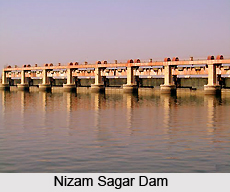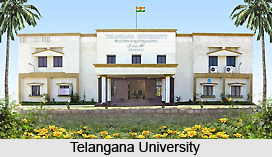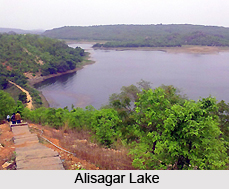 Nizamabad, situated in the Nizamabad district of the south Indian state Telangana, is a city and municipal corporation. It was previously known as Indur and serves as the headquarters of the Nizamabad district. Nizamabad is a major urban centre of the state and is the third most populous city in Telangana. It is also the site for many renowned educational institutions.
Nizamabad, situated in the Nizamabad district of the south Indian state Telangana, is a city and municipal corporation. It was previously known as Indur and serves as the headquarters of the Nizamabad district. Nizamabad is a major urban centre of the state and is the third most populous city in Telangana. It is also the site for many renowned educational institutions.
History of Nizamabad
The history of Nizamabad dates back to the 18th century when it was ruled by Nizam-ul-Mulk, the fourth Nizam of the erstwhile Hyderabad state. The city also derived its name from him. In the year 1905, the construction of railway line between Secunderabad and Manmad was done in this region. In 1923 the Nizam Sagar dam was built over the Manjira River, at a village called Achampet, near Nizamabad. The dam irrigates around 250,000 acres of land in the district.
 Climate of Nizamabad
Climate of Nizamabad
Nizamabad is located as a substantial distance from the coast and enjoys tropical savanna climate with maximum rainfall from June to October. High fluctuations in climate can be experienced in the city. During summers the temperature rises up to 47 degree Celsius while in winters it drops to about 5 degree Celsius. The place has an annual temperature of 32 degree Celsius.
Demography of Nizamabad
As per the census of 2011, the total population of Nizamabad has been calculated to be 310467 among which 49 percent are female and 51 percent are male. The average literacy rate of the city constitutes 80.31 percent which is higher that the national average of 74.04 percent. The female literacy rate is 73.83 percent while the male literacy rate is 86.82 percent. About 13 percent population of Nizamabad is below six years of age.
Administration of Nizamabad
The Municipality in Nizamabad was formed in the year 1931. In 1987 it was upgraded to a special grade Municipality. On 5th March 2005, the Nizamabad Municipality got upgraded as Nizamabad Municipal Corporation.
 Economy of Nizamabad
Economy of Nizamabad
Nizamabad has several sources of economy. Agriculture is practiced by many people and the major irrigation projects in the city include Nizam Sagar, Sri Ram Sagar (Pochampahad), Ali Sagar Lift Irrigation and others. Pearl Millet, Sorghum, Maize, Rice, Turmeric and Sugarcane are the main crops grown here. All types of vegetables also grow in the city. Industrial sector is quite developed in Nizamabad. Over years, the real estate has also flourished in the city with increasing numbers of commercial complexes and high rise apartments.
Education of Nizamabad
Nizamabad shelters many engineering colleges. Vijay Rural Engineering College, an esteemed college of the state, is located here affiliated with Jawaharlal Nehru Technological University, Hyderabad (JNTUH). Kakatiya Junior College is another reputed college. Telangana University is located 15 kilometres away from the city. Other important educational centres of Nizamabad include Nishitha Degree College, Government Medical College, Kakatiya Engineering College for Women, Kshatriya College of Engineering, Arkay College of Engineering and Technology etc.
Transport of Nizamabad
Nizamabad has a good connectivity of roadways and NH44 passes through it connecting Varanasi and Kanyakumari. The 500 kilometres long NH16 begins at Nizamabad and reaches to Jagdalpur in Chhattisgarh, passing through Karimnagar. Bus services are catered by the Andhra Pradesh State Road Transport Corporation (APSRTC) and a number of private vehicles can also be hired. Nizamabad railway station is situated in the Kachiguda-Manmad section of Hyderabad Division of the South Central Railway Zone (SCR) and connects all major cities of India. Nanded Airport, located 136 kilometres away, is the nearest domestic airport whereas Rajiv Gandhi International Airport at Hyderabad is the nearest international airport, situated 162 kilometres away.
Tourism in Nizamabad
Alisagar is a park situated at a distance of 10 kilometres from Nizamabad. It is a wonderful tourist spot with vast expanses of forest, well laid out gardens, a summer house, a lake, a hilltop guest house and a wonderful island. It also hosts a deer park where trekking and water sports can also be enjoyed.



















